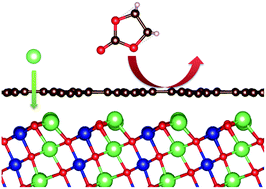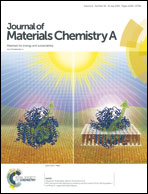Graphdiyne as an ideal monolayer coating material for lithium-ion battery cathodes with ultralow areal density and ultrafast Li penetration†
Abstract
Surface coating of electrodes is an effective way to enhance the performance of lithium-ion batteries (LIBs). It is highly desirable to find ideal coating materials with fast Li penetration and low areal density. Based on first-principles calculations we propose that monolayer sheets can be used as such materials by taking graphdiyne as a test case. We find that the porous structure of graphdiyne can allow fast Li penetration and block the direct contact between the electrode and electrolyte with strong binding between graphdiyne and the LiCoO2 cathode. Graphdiyne has a low areal density, and its electrochemical window is wide enough for it to work at different voltages. In addition, the electronic conductivity of LiCoO2 is improved when coated with graphdiyne as a result of the metallic electronic structure and low interfacial resistance of the graphdiyne coated LiCoO2 electrode. These intriguing theoretical findings would stimulate experimental work on searching for novel coating materials for LIBs.



 Please wait while we load your content...
Please wait while we load your content...